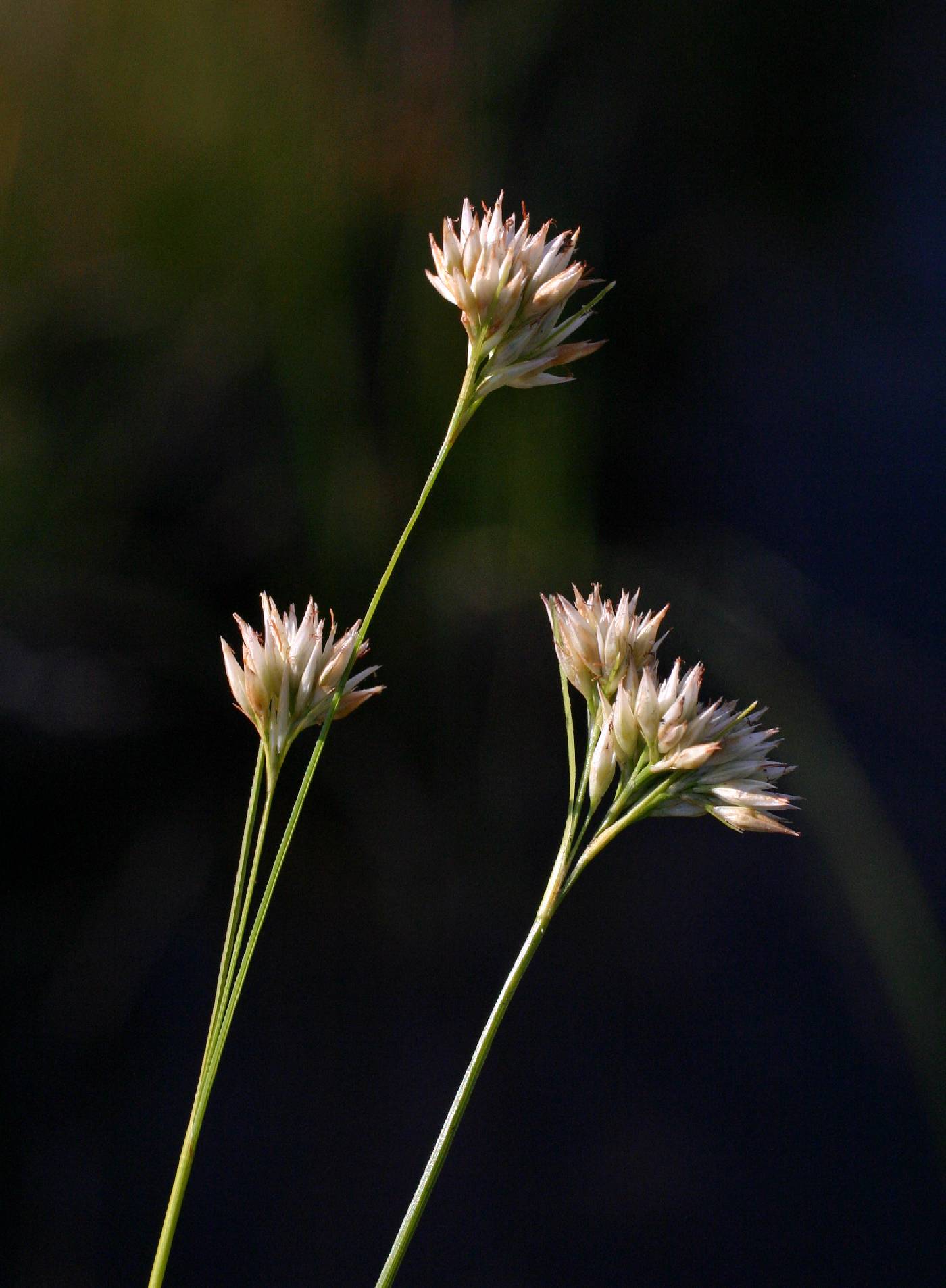Rhynchospora
|
Family: Cyperaceae |
Herbs, annual or perennial, cespitose or not, often scaly-rhizomatous. Culms procumbent to erect, usually trigonous, wiry to stout. Leaves basal and cauline, polystichous, mostly 3-ranked; sheaths open apically, glabrous; ligules present or absent; blades flat, V-shaped in cross section or terete, typically keeled abaxially, margins involute or revolute, usually scabrid or scabridulous. Inflorescences terminal, rarely pseudolateral, paniculate, corymbose, anthelate, racemose, or capitate; spikelets 3-100 or more; involucral bracts 1-6, spreading or rarely the proximal erect, leaflike. Spikelets: scales spirally or distichously arranged, each subtending flower; 1 or more proximal scales empty. Flowers all bisexual or sometimes distalmost staminate; perianth absent or of 2-12(-20) bristles, usually persistent in fruit, rarely deciduous, variously barbed or plumed, shorter or longer than achene, seldom smooth; stamens 2-3; styles undivided or shallowly 2-fid, or deeply cleft into 2(-3) linear stigmatic branches; style base persistent as tubercle on fruit, usually articulate to achene apex, distinct, enlarged. Fruits achenes, borne on pedicellar joint, directly distal to compact, dilated receptacle; body various shades of brown, flattened, lenticular (biconvex), or nearly terete, smooth and lustrous or variously ridged, pitted, alveolate (honeycombed), cancellate (netted, latticed), papillate, or warty; tubercle mostly conic or variously triangular, terete or flattened and 2-edged, sometimes longitudinally sulcate, widest across base; base along narrow transverse suture, lunate, 2-lobed, or topping achenial 'neck' or buttress, much narrower, as wide as, or wider than achene apex, decurrent down achene margins. The working basis for the classification used here is from G. Kükenthal, the first modern monographer of Rhynchospora worldwide (1949-1951). He divided the genus into two subgenera, Haplostylae (Nees) Bentham and Diplostylae Bentham, based on degree of stylar branching. In subg. Haplostylae the stylar apex is virtually unlobed, surmounted by two tubercle like stigmas, or shallowly bifid with the stigmatic branches rarely approaching 1 mm. Thus the stigmatic area is small compared to that of plants in subg. Diplostylae, in which the stylar apex is divided into two narrowly linear, elongate stigma branches. The North American flora has representatives of only two sections of subg. Haplostylae: sect. Longirostres Kunth and sect. Polycephalae C. B. Clarke. Sect. Longirostres, comprising both cespitose and clonal species, contains some of the largest, most robust species in the genus (e.g., Rhynchospora careyana, R. corniculata, R. inundata), with culms often reaching nearly two meters. Section Polycephalae is represented in the flora by only one species, R. tracyi Britton, which forms large clones by slender, stoloniferous rhizomes. Subg. Haplostylae makes up species 1-6 in this treatment; the remaining 62 species all have deeply bifid styles, in most cases with slender stigmas fully half as long as to nearly equaling the undivided slender portion of the style, and therefore belong to subg. Diplostylae. A clear majority of 54 species were very competently evaluated by S. Gale (1944) who referred them to sect. Eurhynchospora, now treated as subg. Rhynchospora. These species sort into several species groups called 'series,' 'subsections,' 'pars,' or 'sections,' depending on treatment authors. Two sections of Rhynchospora with the deeply divided styles, Dichromena (4 species in the flora) and Psilocarya (3 species in the flora), both without vestigial perianth, were omitted from Gale´s treatment. Members of the sect. Dichromena, with leafy, often whitened, involucral bracts subtending whitish heads of spikelets, and sect. Psilocarya, with spikelets peduncled in congested to diffuse panicles, were treated as genera until recently. Most members of Rhynchospora are cespitose. This does not preclude the possibility of some species (e.g., R. caduca, R. mixta) from having well developed scaly rhizomes or others (e.g., R. oligantha, R. breviseta, R. rariflora, R. stenophylla) from forming dense, hard-based tufts from packed, intertwined short rhizomes. Only a few species are strongly clonal by elongate rhizomes; those are mostly in subg. Haplostylae (e.g., R. tracyi, R. careyana, R. inundata) or subg. Diplostylae sect. Dichromena (e.g., R. colorata). Also in this treatment the term 'fruit' is used not just for the achene but for the achene and all structures attached and subsequently shed with it. A total length measure begins at the pedicellar joint (nearly always very contracted) and proceeds through the receptacle and fruit body (achene) to the tubercle tip. Tubercle length is measured from the middle of the achene summit to the tip of the tubercle. For accuracy one must measure completely ripened fruit, particularly to note the very narrow zone at the tubercle tip where the proximal portion of the style disarticulates. Unless specifically stated, fruit measurements include the tubercle. Rhynchosporas are often dominant or co-dominant herbaceous graminoids in marshlands and savannas. Many species occuring in marshlands provide food for migratory waterfowl.
Spikelets several to many, cymosely (or in part subumbellately) arranged in leafy-bracteate, open to congested infls, often forming 1- several dense glomerules; scales spirally imbricate, sometimes each subtending a fl, but more often the lower empty and only 1-few of the upper ones subtending fls; fls perfect or some of them staminate; perianth of (1-)6(-20) bristles, or sometimes wanting; stamens (1-)3; style bifid, its expanded base (tubercle) enlarged at maturity and persistent on the lenticular achene; our spp. mostly perennial (2 spp. annual), with ±leafy (seldom lfless), often trigonous stems and narrow, grass-like lvs with closed sheath. (Dichromena, Psilocarya) 200+, chiefly of warm regions. Gleason, Henry A. & Cronquist, Arthur J. 1991. Manual of vascular plants of northeastern United States and adjacent Canada. lxxv + 910 pp. ©The New York Botanical Garden. All rights reserved. Used by permission. |

